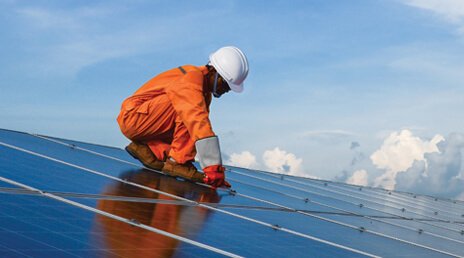Potential ESG considerations for construction and design companies include:
E - Environmental
- Material selection - use of components that are produced using less energy
- Water consumption - both during construction, as well as over the life cycle of the building
- Construction methods - less carbon-intensive and more environmentally-efficient
- Use of new and innovative technologies
- Waste management - reducing and reusing
- Future proofing design - anticipating future climate change and constructing a climate-resilient built environment
S - Social
- MCommunity impact - transportation (public/private)
- Accessibility - economic, and in consideration of impairment/disability
G - Governance
- Procurement (including supply chain management)
- Stakeholder engagement
“We are at a crossroads,” said Hoesung Lee, Chair of the UN’s Intergovernmental Panel on Climate Change (IPCC), on April 4, 2022. “The decisions we make now can secure a livable future. We have the tools and know-how required to limit warming.”
Lee made the announcement on the day the IPCC published a stark warning to the world: without immediate and deep emissions reductions across all sectors, limiting global warming to 1.5°C – a central goal of the 2015 Paris Agreement – is beyond reach.
Cities, urban areas, and buildings were highlighted as offering opportunities to reduce carbon emissions: “We see examples of zero energy or zero-carbon buildings in almost all climates,” said Jim Skea, Co-Chair of IPCC Working Group III. “Action in this decade is critical to capture the mitigation potential of buildings.”
A sector with a heavy footprint
It’s little wonder that pressure on the construction sector to clean up its environmental, social and governance (ESG) act is intensifying. Buildings are responsible for around 40% of global energy consumption, a quarter of global water usage, and a third of greenhouse gas emissions [1]. Every year, more than four billion tons of cement are produced, accounting for around 8% of global carbon emissions [2]. As well as the ‘embodied carbon’ of buildings, which are the emissions associated with their overall construction and its supply chain, the built environment also generates emissions from heating, cooling, and lighting systems. Over 80% of buildings that will be here in 2050 have already been constructed [3] – meaning their effects could be felt in a future with unknown weather conditions and possibly scarce resources.
Calls for the construction sector to act are coming from many directions. Investors and consumers are voicing concerns about ESG issues, with legislation, regulation, and reporting requirements evolving quickly in many jurisdictions around the world. In the UK, all companies bidding for government contracts worth more than £5m a year must now commit to net zero by 2050 [4], while new proposals in the EU [5] call for the mandatory disclosure of the emissions potential of new buildings over their whole life cycle, effective from 2027 to 2030.
Strong sustainability metrics are attracting investors, who recognize they make property more marketable, can attract lucrative tenants, increase property value, and lead to higher profitability. Construction professionals need to rise to the challenge presented by climate change, not only for the greater good, but to attract investment and minimize their exposures to claims and litigation.

The what and the how of building
There are two main areas to consider when looking at where the potential liabilities for the design and construction industry may rise in the context of climate change – what it builds and how it builds. Key areas of focus are sustainability, durability, resilience, energy efficiency, waste reduction, and water conservation.
“We’ve got used to the spectacle of skyscrapers on our urban horizons, but their energy-intensive need for air-conditioning and heating has been called into question,” says Diego Assef, Head of Global Practice Group for Professional Indemnity Claims at AGCS. “Indeed, we have seen a steady development in claims resulting from design errors from mechanical and plumbing plans and specifications, and heating, ventilation and air-conditioning systems (HVAC), including losses from overheating of floors and temperature fluctuations, heightened maintenance and replacement equipment costs, as well several other related issues that generate high exposures for insureds.”
In addition, in the future, buildings must also be able to withstand the consequences of changing weather patterns, whether it’s soaring temperatures, floods in Continental Europe or wildfires in California. This is particularly true if those buildings are contractually designed to last for a certain number of years.
Energy efficiency needs to be built in, including renewable sources such as solar, wind and geothermal, with energy performance boosted by smart monitoring technologies, careful use of natural light, insulation, and features that maximize natural heating. In the past, simple energy efficiency was the goal, but now there are aspirations to zero-energy use or carbon neutrality, even ‘positive energy’, which can return unused energy from renewable sources back to the grid.
Water can be saved with low-use fixtures and efficient disposal, including the reuse and recycling of gray water. Resilience can be designed into buildings with adaptable spaces that are updated as needs change, saving resources and reducing waste.
New innovations are enabling smarter sustainability choices to be incorporated at the design stage. Building information modeling (BIM) creates a layered digital model of a structure, showing its design and functions, while digital twins are simulations that collate data for insights on how buildings will be used.
Data also powers the IoT (Internet of Things) and its efficiency-driving potential. Connected devices, sensors and wearable technologies can boost ESG performance in a range of functions, including energy usage, predictive machinery maintenance, waste management, budget control, and health and safety.
When it comes to choosing building materials, construction professionals need to take a ‘whole of life’ view of potential impacts on the environment and natural resources. Along with immediate concerns, such as ethical sourcing, transportation, potential toxicity, or permeability, any assessment of longer-term impacts should include durability, potential for reuse, and how materials will be disposed of.
As well as exploring alternative materials, professionals should consider innovative building practices to cut their emissions and costs. Modular construction – once known as ‘prefab’ – is generating renewed interest, thanks to digital tools that enable the precision manufacturing of building components off-site. Advocates of the practice cite streamlined material use, lower costs, easier quality control, and reduced exposure to the elements as its advantages.
Measuring ESG
- BREEM: One of the longest-running sustainability assessment methods for project master planning, infrastructure and buildings. It can be used for new construction, in-use, or refurbishment – the entire building life cycle.
- WELL: A framework for creating and certifying spaces to promote health and wellbeing.
- LEED: A rating focusing primarily on the impact of energy consumption.
- Green Globes: An online assessment protocol, rating system, and guidance for green building design, operation and management.
Expect the unexpected
Industry professionals will be expected to keep up to date with new advances in technology, materials, and practices that might contribute to the environmental performance of a building. But new innovations can carry risks. As climate change presents new challenges, novel project designs will need to be drawn up – sometimes with untested results.
Unintended consequences can arise, even from the best intentions. Renewable energy infrastructure may create ‘clean’ power, but the inadequate disposal of solar panels has led to harmful materials leaching into the environment. Decommissioned wind turbine blades are also clogging up landfill sites. There are concerns, too, about onshore wind’s effects on bird migration, and offshore farms’ impact on fishing and recreation.
What constitutes reasonable skill and care?
Environmental legislation and regulation vary greatly by country and region and are likely to become more stringent. Professional associations that incorporate ESG requirements, along with heightened consumer expectations, could further expand the standard of care construction professionals are held to at present. Failure to meet targeted ratings from recognized organizations could result in claims against professionals.
“In the absence of any written terms and conditions to the contrary, construction professionals have a legal duty to exercise reasonable care and skill,” explains Assef. “The test for determining this is whether the professional has carried out their work to the same standard that another reasonably competent member of their profession would have. If they have not equipped themselves with the knowledge and skills to do so, and if they have not informed their clients of the potential impact of climate change on buildings, they could be deemed negligent or responsible for a loss.”
For example, following the devastation wrought by Hurricane Katrina on New Orleans in 2005, a class action was brought by the Saint Bernard Parish Government and other property owners against the US government. A shipping channel built in 1968 by the Army Corp of Engineers was argued to be a partial cause of flooding because of the wetlands that were destroyed in its construction. The plaintiffs did not ultimately prevail, but future actions have the potential to conclude differently.
In 2006, contractor MT Hojgaard was engaged to design, fabricate and install foundation structures for 60 offshore wind turbines. While it followed accepted design standards, failures in grouted connections occurred. It was later found [6] that these same failures were experienced across the industry and that MT Hojgaard should have known of these well-reported failures.
Professional Indemnity: Questions insurers may ask about design and build
- Will the construction company and its design provide services that are significantly environmentally impactful, such as working in a protected area like a wetland?
- Will the project use raw materials that are mined? What other natural resources will it use?
- Where does the company operate? Regulations vary by jurisdiction and the geography of each region presents different challenges and risks.
- What is the company's ESG policy and how is this overseen, communicated, and implemented?
- What are the reputations of the company's partners and suppliers?
- What is the insurance loss history of the company, including on similar projects they have undertaken?
- Are standard or tested contracts issued that clearly communicate the requirements and expectations for all parties?
References
[1] United Nations Environment Programme, Energy Efficiency for Buildings
[2] Chatham House/Cambridge IP, Making Concrete Change: Innovation in Low-carbon Cement and Concrete, 2018
[3] European Commission, European Green Deal: Commission Proposes to Boost Renovation and Decarbonisation of Buildings, December 15, 2021
[4] Gov.uk, Companies Bidding for Major Government Contracts Face Green Rules, September 30, 2021
[5] European Commission, Questions and Answers on the Revision of the Energy Performance of Buildings Directive, December 15, 2021
[6] Ince, Offshore Construction: Supreme Court Reverses Court of Appeal Decision and Holds MT Højgaard Liable for Failure of Foundation Structures of Offshore Wind Turbines at Robin Rigg, April 8, 2017
Pictures: Adobe Stock




























